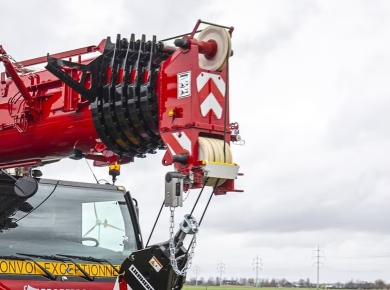Welding is an intricate dance between skill and safety, where the heat of the moment can lead to life-altering consequences. As a seasoned professional in the construction and safety industries, I’ve witnessed firsthand the critical role personal protective equipment (PPE) plays in safeguarding workers. Among the myriad of safety gear, welding respirators are often overshadowed by respirators designed for other applications. Yet, the importance of having the right respiratory protection while welding cannot be overstated, especially when considering the harmful fumes and particulate matter generated during the process.
The Hidden Dangers of Welding Fumes
Welding operations release a cocktail of hazardous fumes that can jeopardize your health if proper precautions aren’t taken. These fumes can contain toxic substances such as manganese, lead, and cadmium. In my experience, many welders underestimate the risks, thinking that a welding hood is enough to protect them. However, the hood primarily shields against sparks and heat, not the noxious gases and fine particles that can seep into the lungs.
Understanding the Risks
Without adequate respiratory protection, welders may face long-term health issues, including respiratory diseases, neurological problems, or even cancer. I recall a colleague who suffered from chronic lung issues after years of neglecting proper ventilation and respiratory gear. His story serves as a stark reminder that safety cannot be an afterthought.
Why Your Hood Isn’t Enough
A welding hood is essential, but it should not be relied upon as a standalone solution. While it protects your eyes and face from sparks and UV radiation, it does little to mitigate the inhalation of harmful fumes. Many welders mistakenly believe that simply wearing a hood provides comprehensive protection. However, the reality is that welding respirators are specifically designed to filter out hazardous particles and gases.
Types of Welding Respirators
Choosing the right welding respirator is crucial. There are several options available, each tailored for different environments and welding processes. For example, a half-mask respirator with P100 filters is effective for most welding operations, while powered air-purifying respirators (PAPRs) offer the highest level of protection and comfort for those working in confined spaces or with particularly toxic materials.
In practice, I’ve found that PAPRs can significantly reduce fatigue during long hours of work by providing a steady flow of clean air. While they may come at a higher price point, the investment pays off in enhanced comfort and safety.
Real-World Application and Best Practices
Integrating welding respirators into your safety protocols requires more than just purchasing the gear. It involves a culture shift on the job site towards prioritizing health and safety.
Conducting Training and Awareness
Training is essential. Regularly scheduled safety meetings should cover the importance of respiratory protection, the types of respirators available, and the correct way to use them. I’ve found that involving the team in discussions about safety gear fosters a sense of responsibility and awareness.
Additionally, implementing a buddy system can help ensure that everyone is wearing their respirators correctly. When colleagues look out for one another, it cultivates a safer work environment.
Regular Maintenance and Inspection
Just as you wouldn’t trust a faulty welding machine, you can’t rely on a respirator that isn’t in top condition. Regular maintenance and inspections are vital. Before every shift, the respirators should be checked for any signs of wear or damage. Filters must be replaced according to the manufacturer’s guidelines, and any equipment that doesn’t pass inspection should be immediately taken out of service.
Compliance and Regulatory Considerations
Staying compliant with Occupational Safety and Health Administration (OSHA) regulations is a fundamental aspect of welding safety. OSHA provides clear guidelines regarding respiratory protection in the workplace, emphasizing the need for a respiratory protection program. Non-compliance can lead to significant legal repercussions and, more importantly, jeopardizes worker safety.
Implementing a Respiratory Protection Program
A well-structured respiratory protection program should include a written policy, training sessions, and periodic evaluations of the program’s effectiveness. This program not only protects employees but also demonstrates a commitment to safety that can enhance the company’s reputation.
In my years of experience, I’ve seen a direct correlation between safety compliance and employee morale. When workers feel protected, they are often more engaged and productive.
Conclusion: Prioritize Your Safety
Welding respirators are not just another piece of equipment; they are an essential component of a comprehensive safety strategy. The right respiratory protection can mean the difference between a healthy career and a lifetime of health issues. As professionals dedicated to construction, health, and safety, we have a responsibility to ensure that our teams are equipped with the best possible protection. By prioritizing respiratory safety, we not only protect our workers but also foster a culture of care and accountability on the job site. Embrace the responsibility of safeguarding your health and that of your colleagues—because every breath counts.


